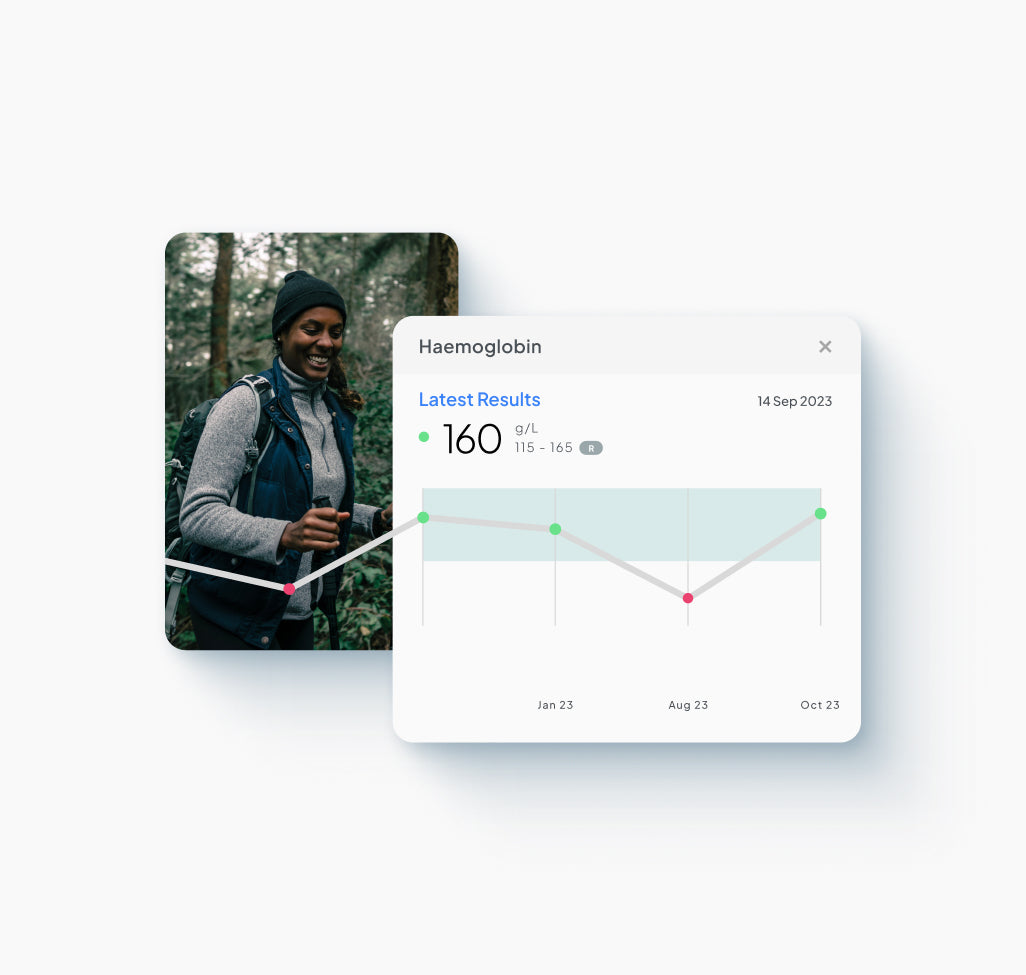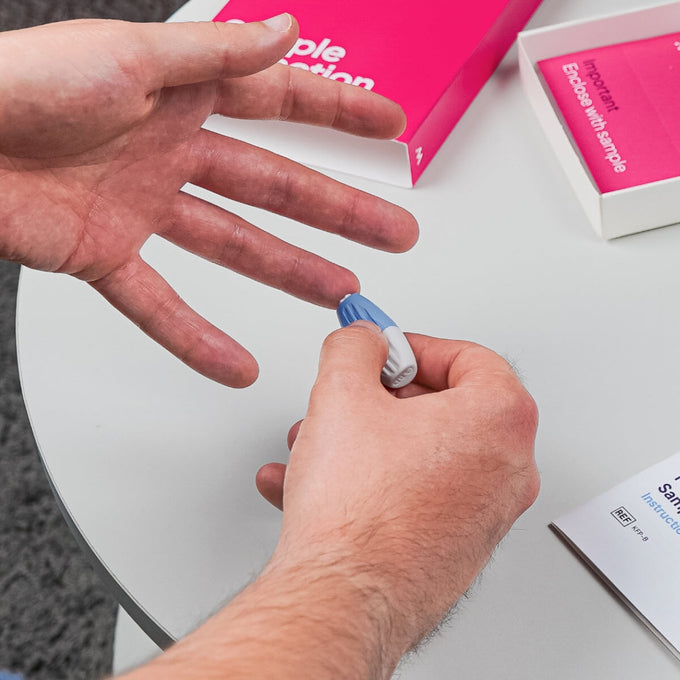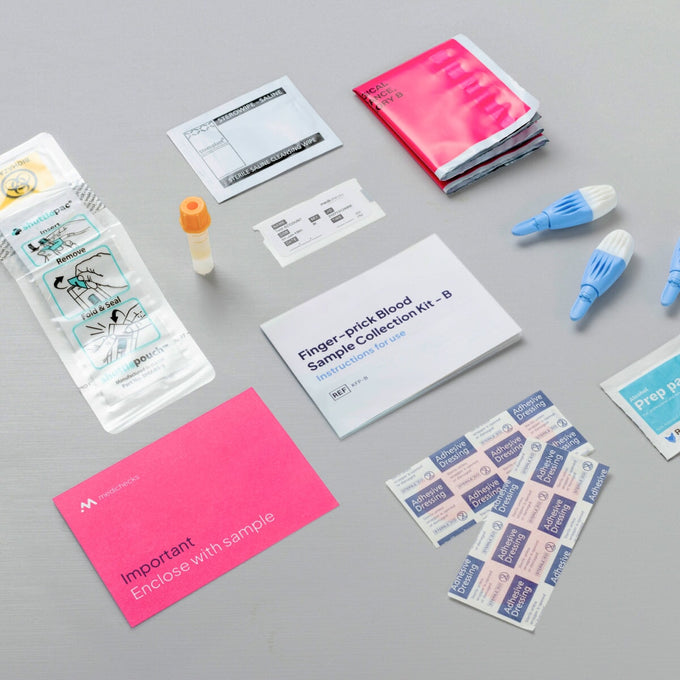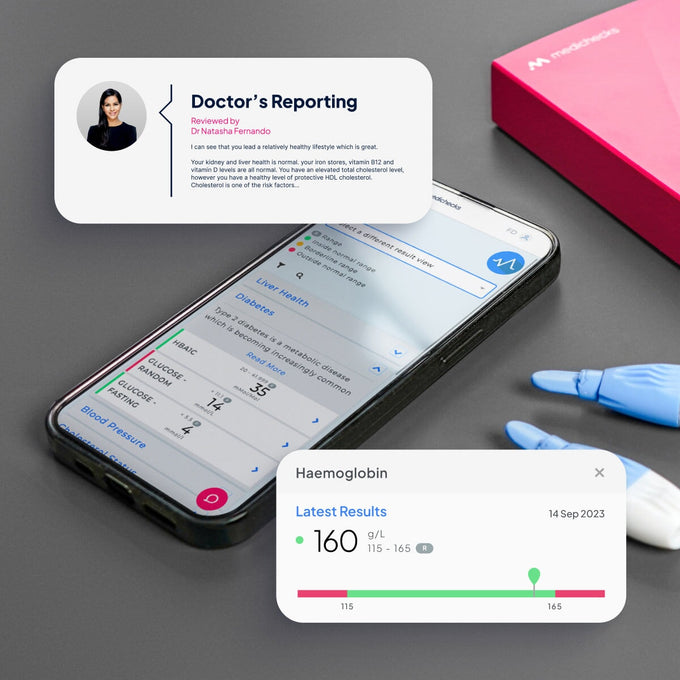Biomarker table
Hormones
FSH
Learn more
LH
Learn more
Testosterone
Learn more
Free androgen index
Learn more
Proteins
SHBG
Learn more
How to prepare for your test
Prepare for your Polycystic Ovary Syndrome Check Advanced Blood Test by following these instructions. Take your sample before 10am. Take this test two to five days after the start of your period, ideally on day three. It can be taken any time if you do not have periods. Do not eat or drink anything other than water for 12 hours prior to your test. If you take medication then you are allowed to take it as you would normally. Do not take biotin supplements for two days before this test, discuss this with your doctor if it is prescribed. Hormonal contraception can affect the results of this test. Taking a break from this and waiting for your periods to restart before your blood test will give more accurate results.

How it works
Your personalised, actionable health results are only a few clicks away. Order your test, take and post your sample, then view your results online with our doctors' comments.

Track, improve, and monitor your health over time
MyMedichecks is your personal online dashboard where you can view your results, access clear and simple explanations about individual health markers, monitor changes in your health, and securely store information about your medical history, lifestyle, and vital statistics.
FAQs
What is a PCOS Blood Test?
Our Polycystic Ovary Syndrome Blood Test includes tests for testosterone, sex hormone binding globulin (SHBG), and the free androgen index (FAI) to indicate the number of available androgens circulating in the blood. You can also measure your luteinising hormone (LH) and follicle-stimulating hormone (FSH). A high LH/FSH ratio of between 2:1 or more may indicate PCOS.
Who is a PCOS Blood Test for?
Our PCOS Blood Test is for any woman experiencing PCOS symptoms who wants to investigate further.
What is PCOS?
Polycystic Ovary Syndrome (PCOS) is a condition in women that affects the ovaries - resulting in the development of cysts on the ovaries, which can become enlarged. PCOS is a common condition and, in the UK, affects around seven in every 100 women. Initial investigations into PCOS focus on medical history, irregular periods (or none at all), and high levels of male hormones (androgens) in the body.












